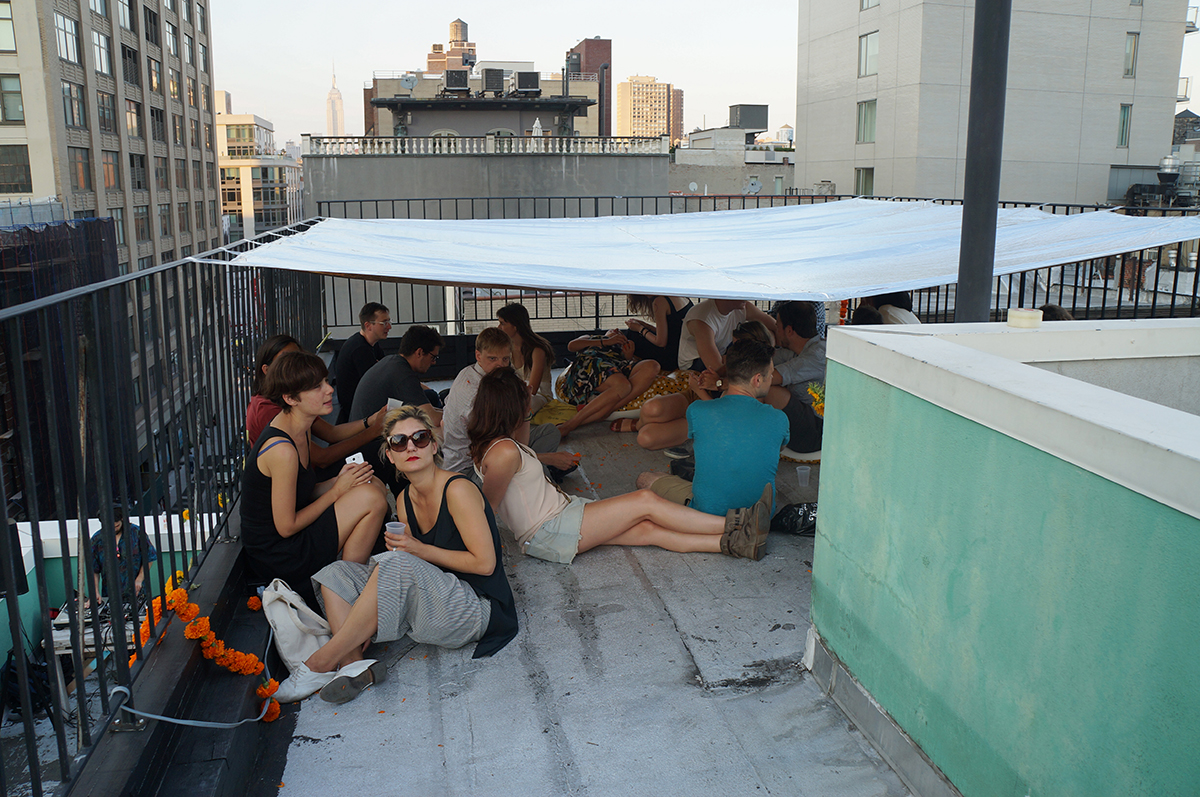The Platform Became a Vehicle
Bika Rebek applied to the last call for ideas with idea The Invisible Blanket and was one of the 25 selected emerging creatives of 2017. She shared some insight into the Future Architecture journey that followed.
ClaraWildberger-HDA%20(20).jpg) ©Clara Wildberger, HDA
©Clara Wildberger, HDA
I was lucky enough to be invited to participate in three events after the initial round of lectures in Ljubljana. I had gone to build an installation at the Haus der Architektur in Graz, only a short train-ride away from Ljubljana. I discovered a thriving cultural hub and a city with a small but vital architectural scene. The Haus der Architekur organized a full-blown exhibition with seven participants based on the theme “architecture after the future” curated by Ana Jeinic. Another Ana – Croatian designer Ana Dana Beros – designed the thoughtful exhibition layout and the furniture. As an exhibition designer myself it was wonderful to experience the process from the other side, and to see how much care was given to the proper framing of all the projects. I invited a young Italian practice, Amore Agency, to work with me on a one-to-one installation and we spent a week in the storefront of the gallery building a giant wall/curtain and drinking the local caffeinated refreshment Makava. At the opening we served strange-tasting drinks from poured silicon cups that were placed on a real marble column brought in miraculously by the Italian duo.
A few weeks later in early July I made my way to Pristina, the capital of Kosovo, for Kosovo Architecture Festival. While born in the same country (Yugoslavia) as the people there, it was a real cultural tabula rasa on my mental map of Europe. My hosts corrected that quickly enough, with a demanding schedule day and night of workshops, lectures, dinners and outings. Through some connections made by Bekim Leka Ramku I was able to hold a workshop at the National Museum, working through the interior layout and programming of the space with architecture students eager to help represent their cultural patrimony. The project attracted a lot of attention from the local media, and I hope it might continue in some form in the future. Part of the week-long program in Pristina was a star-studded lecture series, with Future Architecture participants sprinkled in between. As a format, combining workshops with an extended lecture series worked very well, and we took full advantage of our time there.
In October I travelled to Lisbon to speak at a panel organized by the Lisbon Architecture Triennial with three other Future Architecture platform participants for another week of exchange and engaging conversation.
Taking part in the platform gave me the opportunity not only to share my work but also to enter a feedback process and productive dialogue with other practitioners and institutions. More than just exposure, the platform became a vehicle to develop the work itself, like the installation project in Graz or the workshop in Pristina.
 ©The Invisible Blanket, Bika Rebek & Matt Choot
©The Invisible Blanket, Bika Rebek & Matt Choot
In addition, other opportunities emerged that were a direct outcome of the exposure gained at the platform. While it is sometimes hard to determine how exactly various opportunities relate, there were a few instances where I could trace a direct connection: the organizers of an independent architecture festival called Pugliarch found out about my work through the platform and invited me to Bari, Italy, to lecture. It was a lovely trip to Southern Italy and a great symposium with a few other Future Architecture participants.
The Future Architecture platform is also active on social media platforms, and that’s where I first heard about the open call for the Slovenian pavilion at the Venice Biennale. I applied together with a group of collaborators from New York and Slovenia and we were selected to be part of the team representing Slovenia. Given that the platform opened up so many opportunities for me I would love to stay involved in the coming years, and to support the platform through some form of mentorship or any other advisory capacity.
- Bika Rebek, Slovenia, Austria, USA
Bika is an architect based in New York City and Vienna and is aiming to make museum experiences more accessible to a variety of disadvantaged groups. Find out more about Bika's work and apply to the Call for Ideas 2018.